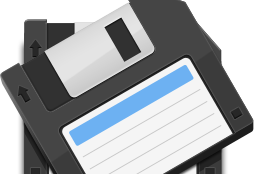Data Longevity
How will we store digital data for the next 500 years?
April 5, 2012
How do we archive heritage documentation so we can be confident we'll be able to retrieve this information next year, in 5 years, in 50 years or 500 years?
The United States Library of Congress requires physical, durable materials for heritage documentation; the standard is ink-on-mylar and large format black and white photographs.
But what if the documentation is digital? A colorized point cloud for example. The oldest digital data is only 60 years old. All of us know today's challenges of reading floppy drives from just a few years ago -- how do we refresh our systems for posterity?
Any acceptable solution has to contemplate the necessary trade-offs between cost, retrieval latency and redundancy. Should we continue storing data on our internal networks -- what most of us do? Even with an offsite tape back-up, we're still exposed.
Should we move everything to the cloud? That gets expensive, particularly when dealing with very large files. Does it make sense to keep disks spinning with data we may only use infrequently, if at all.
What is the prognosis for tape-based solutions? Is the road map for data migration to new and larger capacity media formats acceptable?
We're about to up our game for the CyArk archive. If you're coming to SPAR 2012, join John Sharpe, Senior Product Manager, Data Backup & Recovery at Iron Mountain; Liz Lee, Director of Operations, CyArk and me for a roundtable discussion about how CyArk is developing solutions to these challenges with its partner Iron Mountain. The roundtable takes place April 17 at 1:00 pm.
The United States Library of Congress requires physical, durable materials for heritage documentation; the standard is ink-on-mylar and large format black and white photographs.
But what if the documentation is digital? A colorized point cloud for example. The oldest digital data is only 60 years old. All of us know today's challenges of reading floppy drives from just a few years ago -- how do we refresh our systems for posterity?
Any acceptable solution has to contemplate the necessary trade-offs between cost, retrieval latency and redundancy. Should we continue storing data on our internal networks -- what most of us do? Even with an offsite tape back-up, we're still exposed.
Should we move everything to the cloud? That gets expensive, particularly when dealing with very large files. Does it make sense to keep disks spinning with data we may only use infrequently, if at all.
What is the prognosis for tape-based solutions? Is the road map for data migration to new and larger capacity media formats acceptable?
We're about to up our game for the CyArk archive. If you're coming to SPAR 2012, join John Sharpe, Senior Product Manager, Data Backup & Recovery at Iron Mountain; Liz Lee, Director of Operations, CyArk and me for a roundtable discussion about how CyArk is developing solutions to these challenges with its partner Iron Mountain. The roundtable takes place April 17 at 1:00 pm.

Remember these?
- 119